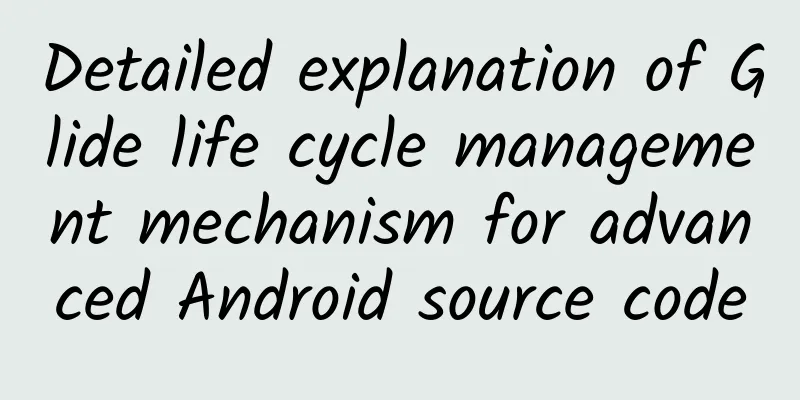Note that it’s not the memory! Who is affecting the storage (ROM) performance of the mobile phone?

|
Just like the main hard disk of new PCs has been fully transitioned to SSD, the flash memory of smartphones has also undergone a major iteration, from eMMC flash memory to UFS flash memory. So, who is affecting the performance of UFS flash memory? Difference between RAM and ROMUntil now, many friends still don't know the difference between RAM and ROM. In this article, we will do a little popular science. RAM stands for mobile phone memory (also known as "running memory"), just like the memory stick on a PC, but the mobile phone memory is a separate chip. ROM stands for storage space (also known as "flash memory"), similar to the hard drive on a PC, and the ROM on the mobile phone still exists in the form of a NAND flash memory chip. Flash memory standardsEarly smartphones all had built-in eMMC flash memory, which is based on NAND flash memory chips, with an additional integrated main controller, and the two are "packaged" and packaged into a BGA chip, thereby reducing the space occupied by the PCB motherboard. The latest standard of eMMC is eMMC 5.1, which is commonly seen in the entry-level mobile phone market within 1,000 yuan, and the maximum reading speed is only about 400MB/s. UFS is an advanced version of eMMC. It is an array storage module composed of multiple flash memory chips, master control, and cache. UFS makes up for the defect that eMMC only supports half-duplex operation (reading and writing must be performed separately), and can achieve full-duplex operation, so the performance can be doubled. UFS currently has standards such as UFS2.0 (read speed 700MB/s), UFS2.1 (900MB/s), UFS2.2 (900MB/s), UFS3.0 (1700MB/s) and UFS3.1 (1900MB/s). UFS2.x is common in mid- and low-end products, while UFS3.x is standard for high-end mobile phones. Flash ChannelLike RAM, UFS flash memory also has single-channel and dual-channel, and the read and write performance of the two differ by 30% to 50%. The good news is that new mobile phones now have dual-channel UFS as standard, so we only need to take a brief look at it. Write Turbo TechnologyWrite Turbo is a virtual technology introduced in the UFS3.0 era. Many brands' flash memory enhancement technologies are mostly optimized based on it. We all know that mobile phone flash memory is now TLC medium NAND chip. Its advantage is that it can save 3 bits in each storage unit and achieve larger capacity at a low cost, but the reading and writing, especially the writing speed is far inferior to SLC NAND. The so-called Write Turbo is actually the virtual SLC technology. It will virtualize part of the TLC flash memory capacity into SLC. When the phone is writing data, the system will give priority to writing it to the virtual SLC space. Since each storage unit of the latter only needs to store 1 bit of data, the writing speed will be greatly improved (the reading speed will also be significantly improved). However, if the amount of data written at one time exceeds the virtual SLC capacity, the read and write speeds will drop sharply to the level of TLC. There are differences among major mobile phone manufacturers in the capacity and scheduling rules of virtual SLC. For example, some manufacturers choose to use full virtual SLC. As the usage space increases, the speed will gradually decrease. Therefore, even if they are all equipped with UFS3.1+Write Turbo flash memory, the actual experience between them may also be different. The latest mass-produced UFS2.2 is essentially UFS2.1+Write Turbo, which can increase the continuous write speed from 250MB/s to more than 500MB/s. Disk array storage systemIn addition to using Write Turbo virtual SLC, Black Shark 4 Pro and Black Shark 4S series also bring us a new idea - disk array storage system. Simply put, in addition to the built-in flash memory chip, this phone also adds an additional SSD chip from Phison, and the two form a Raid 0 array, which increases the reading and writing speeds of the phone by more than 50%. RAMDISK Disk AcceleratorBlack Shark 4 Pro and 4S series also feature a feature called RAMDISK disk accelerator. Many friends should be very familiar with "RAMDISK". CFan has reported many times a long time ago how to use the computer's idle memory to virtualize it into a RAMDISK "memory disk". The programs saved in it run very fast, but the memory disk will be emptied every time the computer is shut down, and the program needs to be reloaded after the next startup. RAMDISK memory virtual hard disk software in the computer field The principle of Black Shark's RAMDISK disk accelerator is similar to that of a memory disk, which directly simulates flash storage space through memory, allowing game files to be read and written directly in memory, greatly improving the startup, loading and running speed of games. It should be noted that this function is only available in the high-end version with 12GB or 16GB of memory as standard, and the 8GB memory version does not support RAMDISK technology. The reason is very simple. In the current application environment, 8GB of memory is not too much, so where is the extra space for your virtual flash memory? In addition, only one game can run in the high-speed mode based on RAMDISK technology at the same time. If you want to switch to other games, you must wait for a certain amount of time for the high-speed mode to complete the mounting. Flash memory two in oneAs the "big users" of the PCB motherboard space inside the mobile phone, the memory (including the SoC hidden underneath it) and flash memory are not small in size. If this storage chip can be stacked together with the processor memory, wouldn't it be possible to save more motherboard space? At the end of 2020, the uMCP5 flash memory technology released by Micron is expected to realize this dream. In short, uMCP5 is the world's first MCP multi-chip package that fully integrates its own LPDDR5 memory chip, NAND flash memory chip and UFS 3.1 controller in a single chip. It adopts TFBGA packaging format and has a maximum optional capacity of 12GB+256GB. Among them, the LPDDR5 memory part of this product supports a data transfer rate of 6400Mbps, and the programming/erase cycle number of the UFS3.1 flash memory part can reach 5000 times. In short, the emergence of Micron uMCP5 can further improve the storage density of mobile phones, save internal space, cost and power consumption, and we also look forward to this "two-in-one" memory chip being mass-produced in the mobile phone field as soon as possible, and having the opportunity to be used in other computing devices such as notebooks. summary As the "iron triangle" that affects the performance output of mobile phones, flash memory and memory are as important as processors, so every time their technological innovations will bring about a tangible improvement in the actual experience. I hope that when you buy a mobile phone in the future, you can pay more attention to the optimization and upgrade of these two areas. |
<<: 256G or 512G? There are some tricks to choosing mobile phone memory
>>: Enterprise Mobility Management in the Past Decade | Who Should Own the Mobile Devices?
Recommend
Introduction to vivo App Store CPD Promotion Platform
CPD Promotion Platform Introduction The vivo App ...
How to identify the jumping code of POS machine? How to identify POS machine code jump?
Credit card receipt. If it is a large machine, the...
Sixty percent of the Greek letters have been used. Why has Omicron become the highest level of concern variant?
According to the announcement released by the WHO...
How to build a core fan group for your live broadcast room?
Hundreds of fans can be seen in Li Jiaqi and Wei ...
What can the Internet of Things do for enterprises?
Internet of Things (IoT) and big data are the nex...
The dwarf killer: the African pygmy falcon
When we talk about birds of prey, we will definit...
My understanding of user activation and practical communication
Activation is to allow users to use the core func...
Solid info! 3 tips for landing page optimization!
This article introduces in detail a complete set ...
When will 5g become popular: What are the things that novices should pay attention to when building a website for SEO?
What should beginners pay attention to when build...
14,000 apps were removed from the shelves at the same time, and Apple once again triggered a delisting storm!
Yesterday (May 6), the trend of apps being remove...
Can a registered personal website do paid ranking?
Websites that have been registered can do keyword...
App promotion, if you can do these 4 things, you will be an expert!
Recently, people often ask me about promotion. So...
E-commerce operation: how to play limited-time flash sales and case analysis
Limited-time flash sales are a marketing applicat...
Lichuan SEO Training: Why do search engine marketing? Which is the largest search engine?
Many people use search engines when they surf the...
A new variant of Omicron was discovered in Suzhou, which is different from any known strain in the world. What should we pay attention to?
Under the influence of the Omicron variant, there...









